May 18, 2025 | 10:57 GMT +7
May 18, 2025 | 10:57 GMT +7
Hotline: 0913.378.918
May 18, 2025 | 10:57 GMT +7
Hotline: 0913.378.918
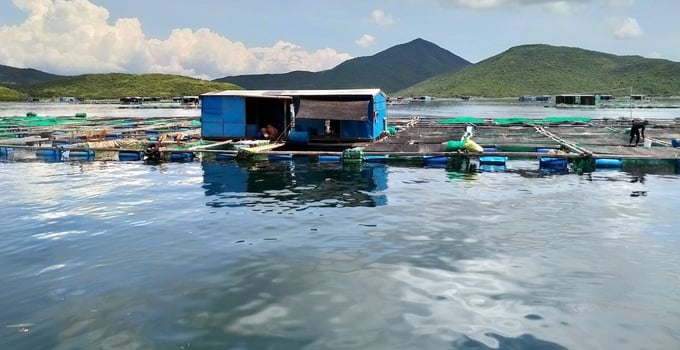
A marine farming model on Van Phong Bay, Khanh Hoa province. Photo: KS.
In recent years, marine farming in the South Central region has not only brought economic efficiency to farmers but also made significant contributions to the agriculture, forestry and fisheries economic structure in localities.
However, there remain shortcomings and limitations that the industry needs to overcome in the future. A good example is the sea farming technology using wooden and bamboo cages is outdated and cannot adapt to climate change.
Storm No. 12 occurred in 2017 and Storm No. 9 in 2021 demonstrated this risk by causing heavy economic damage to farmers in the South Central region. Storm No. 12 still brought fear to fishermen when mentioned. With level 12 winds and level 15 gusts accompanied by heavy rain, it destroyed shrimp and fish cages at sea, causing many households to lose billions in an instant and become empty-handed overnight.
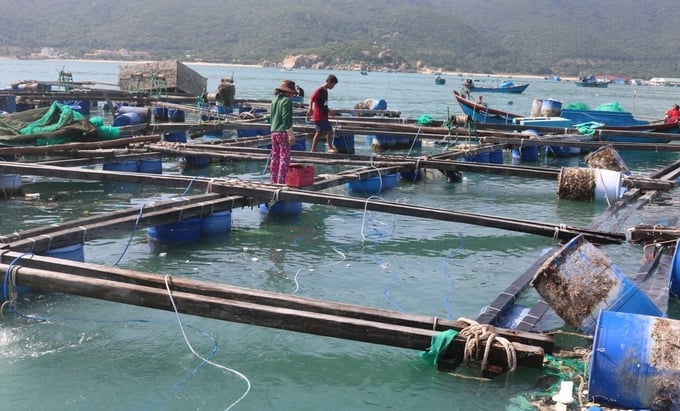
Farming cages made of bamboo wood are not strong enough to withstand extreme weather conditions at sea. Photo: Kim So.
Minister of Agriculture and Rural Development Le Minh Hoan recently signed and promulgated Document No. 1775/BNN-TCTS on strengthening the direction, management and development of marine farming, identifying it as "especially important" in marine economic development.
The current marine farming industry has experienced some positive changes. As of 2022, Vietnam has approximately 7,447 marine farming facilities, with a total of 248,838 cages. The coastal area up to 3 nautical miles has 6,506 facilities with 244,402 cages, accounting for 87.4% of facilities and 98.2% of cages; sea areas from 3 to 6 nautical miles 914 facilities, with 4,299 cages, accounting for 12.3% of facilities and 1.7% of cages; offshore areas beyond 6 nautical miles 27 facilities with 137 cages, accounting for 0.3% of facilities and 0.1% of cages. The total farming area reaches 85,000 ha and 9 million m³ of cages. Total output reaches 0.75 million tons, an increase of 10.7% compared to 2021.
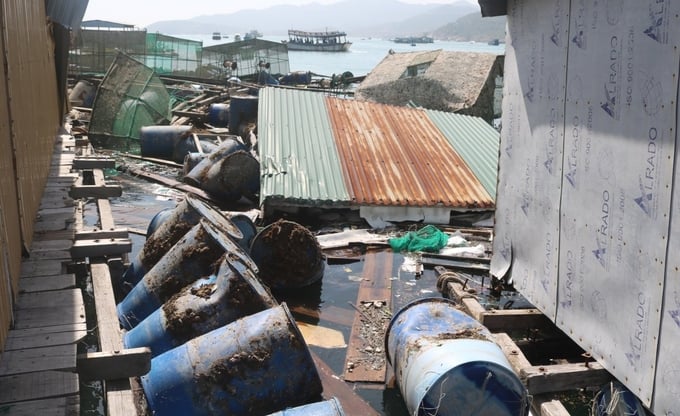
Due to storms No. 12 and 9, many marine farming households suffered tremendous losses. Photo: Kim So.
One thing to note is that marine farming infrastructure poses certain limitations, lacking in uniformity, amd farmers still follow traditional methods. Some businesses have approached marine farming technology on an industrial scale, using HDPE cages (Pearls Vietnam Ltd., Marine Fams ASA (Norway), Australis Aquaculture Vietnam Ltd, etc.), but not many.
Marine farming industries worldwide currently have this trend of switching from small-scale farms and outdated technologies to industrial marine farming models, moving from coastal waters with sensitive ecosystems that easily overlap with other economic activities to offshore waters, gradually shifting to ocean farming.
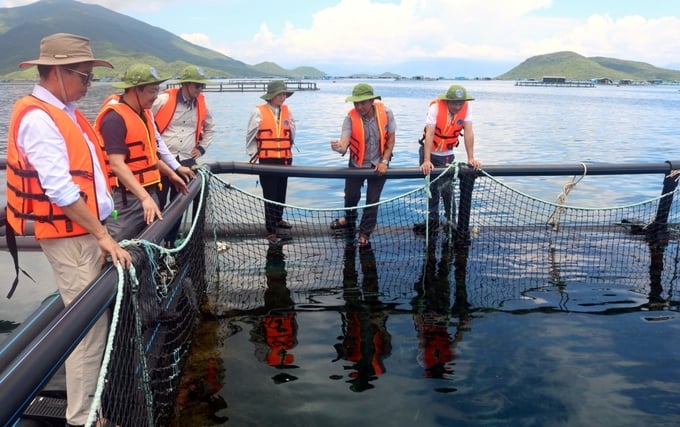
To adapt to climate change, converting wooden farming cages to HDPE cages is essential. Photo: Kim So.
In Vietnam, marine farmers (except enterprises) can be temporarily divided into 3 groups: Marine farming groups with a large number of cages (more than 50 cages), the group with an average number of cages (10 - 50 cages), and the group with a small number of cages (less than 10 cages). Among them, the majority are groups with an average number of cages.
For each different group of marine farming scales, different conversion solutions are needed. The industry must promote cooperation from large-scale groups, pushing them to convert to high-tech marine farming models to lead others.
As for medium-sized groups, local authorities focus on guiding, training and increasing visits to better, more modern marine farming models. At the same time, there should be supportive policies and scientific and technological solutions that are better than what traditional marine farming methods can offer. For groups with fewer cages, it is necessary to promote linkages to increase resources, encourage them to change occupations or band together so they can still participate in the local marine farming value chain.
Farmers practicing traditional marine farming inherently have a fairly simple starting point both in terms of perception and production scale. This is not difficult to understand because the majority of current marine farmers are coastal fishermen, who have only known a lot about exploiting marine products. They may only know that the "sea fortune" has been given to them for thousands of years.
Therefore, changing cognitive thinking will be a process that cannot happen in a day or two. The important thing is to let them "see it for themselves” so that they can change their mindset from within, thereby leading to "voluntary implementation" of action.
Translated by Samuel Pham
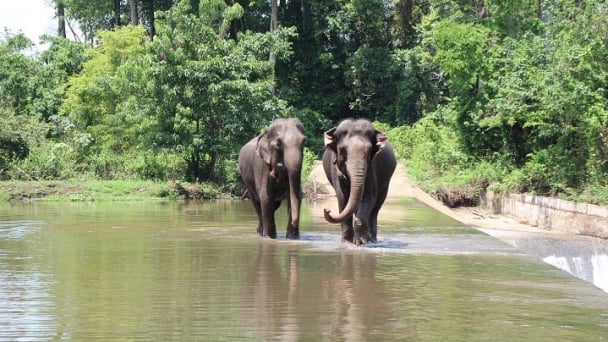
(VAN) 14 out of 35 domesticated elephants in Dak Lak province have had their living conditions improved, with 11 of them currently participating in the non-riding elephant tourism model.
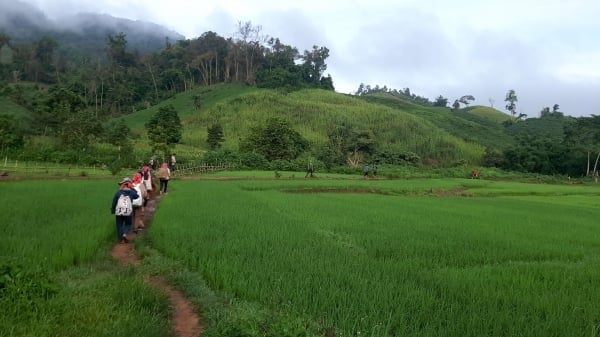
(VAN) Muong Nhe Nature Reserve hopes that being upgraded to a national park will lay the foundation for forest protection efforts to be carried out in a systematic, modern, and sustainable manner.
/2025/05/16/3923-2-171845_52.jpg)
(VAN) Lower costs, higher yields, and improved soil quality are outstanding benefits that soybeans bring when integrated into the crop rotation system.
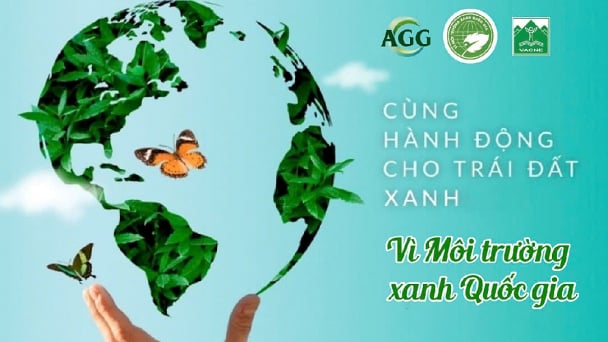
(VAN) The 'For a Green National Environment' programme aims to promote a green lifestyle, support businesses in implementing ESG practices, and turn Net Zero commitments into concrete actions.
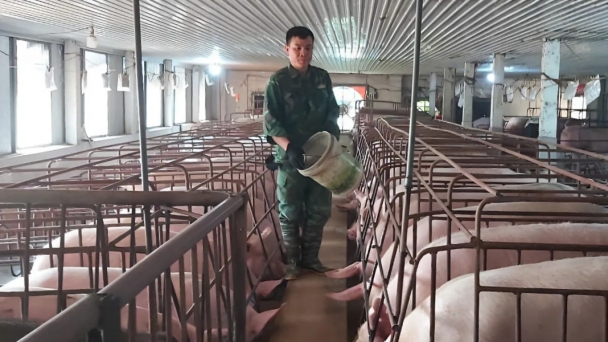
(VAN) Cold-barn systems efficiently manage environmental and temperature conditions, which aids in the prevention of respiratory diseases in pigs and protects them from the vectors that transmit African swine fevers.
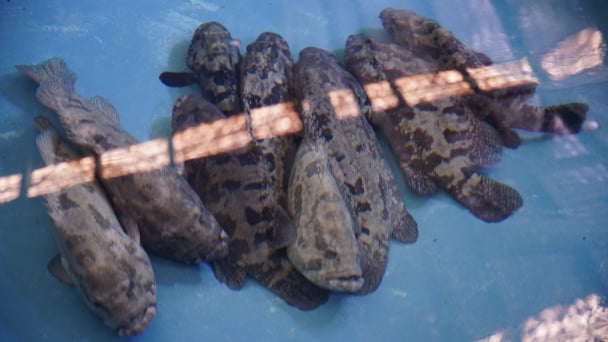
(VAN) To tackle challenges, the project 'Addressing key technical bottlenecks in the grouper supply chain in Vietnam' has been underway since 2024.
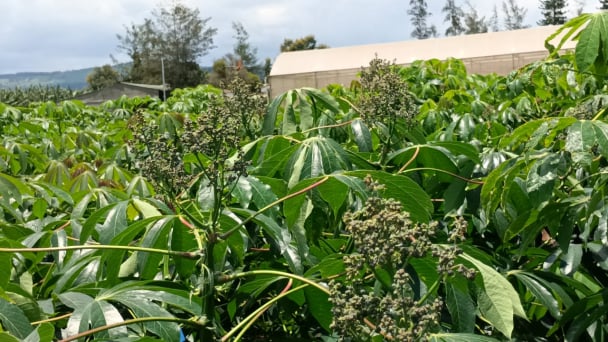
(VAN) The project 'Disease-Resilient and Sustainable Cassava Production Systems in the Mekong Region', funded by the Australian Center for International Agricultural Research (ACIAR), is being implemented from 2024 to 2028.